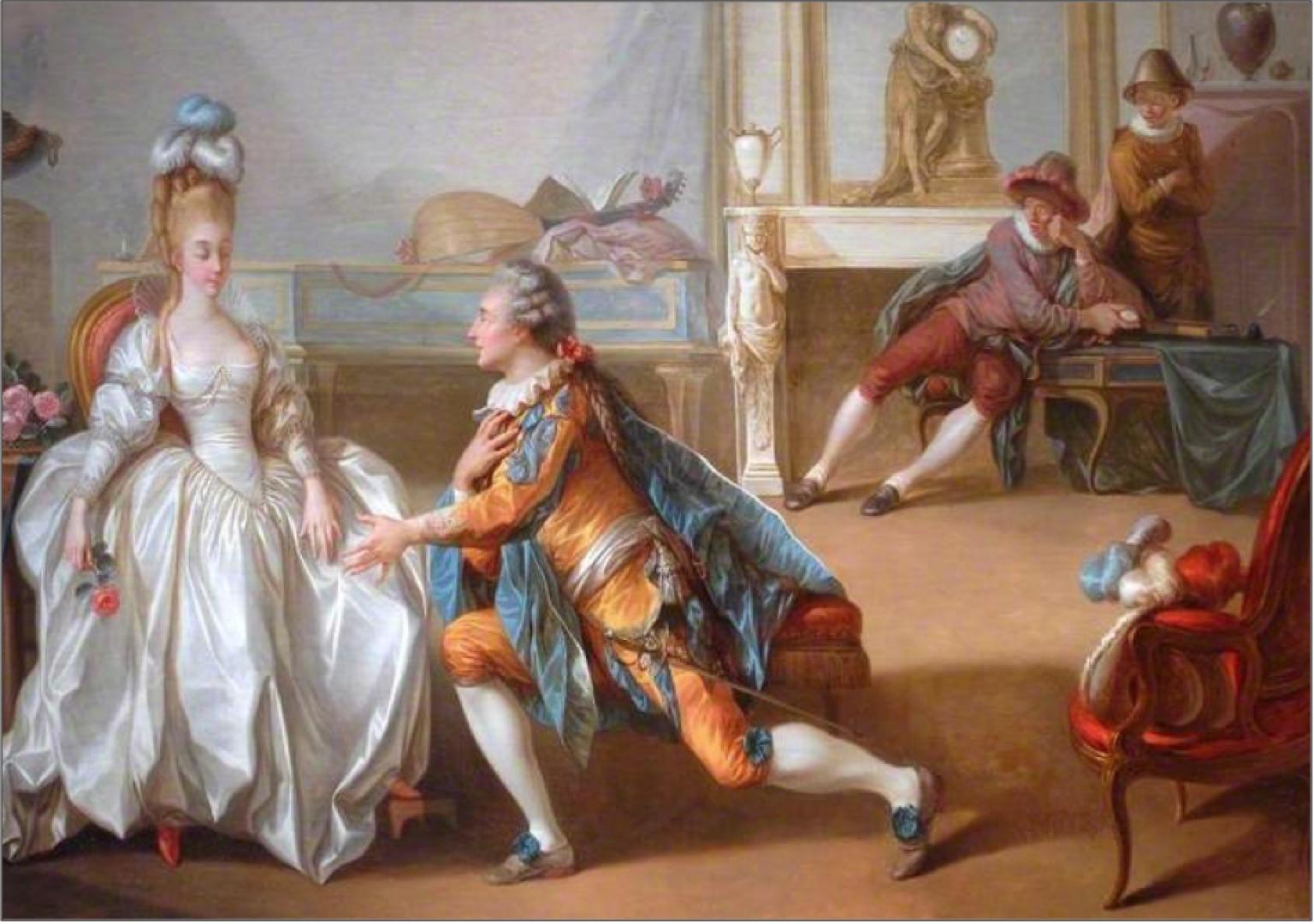In her regular column, Dorothy Blundell takes a sideways look at the collections of The Bowes Museum where she is a volunteer
THE young actress is in costume and make-up. She smoothes down her dark hair, heavily greased and slicked back in manly fashion.
She checks her appearance in the full length mirror and is pleased how the breeches and boots make her short legs look longer. Then, the band strikes up the overture and the cast assemble on stage for the opening scene just as the thick drapes open.
Mademoiselle Grabutot, a one-act comedy of errors, has begun. The date is Sunday, May 23, 1847. It is Josephine Benoîte Coffin-Chevallier’s debut treading the boards as Mademoiselle Delorme and in the lead role – impersonating her brother to discover information about the woman he is about to marry but has never met. And, this being vaudeville, there are bound to be lots of crowd-pleasing songs and some dancing along the way.
Sitting in the audience in the fashionable and popular Theâtre de Varietes in Paris is John Bowes. He had rushed back from Streatlam to see his new love, Josephine, make her stage debut. Also watching was the theatre reviewer Charles Matharel de Fiennes. He was the only critic to never have had a good word to say about Josephine during her short-lived stage career. His subsequent review of her debut was: “A young lady called Delorme, dressed as a man… equipped with plenty of self assurance but very little talent.” However, in later years as painter, Josephine had more than a “little talent” . For four consecutive years her work was accepted by the Paris Salon (public art exhibition).
Bowes had long been an enthusiastic theatre-goer and was also said to be a keen amateur actor, script writer of “home theatricals'” and maybe singer (baritone).
He liked Paris and the sense of freedom he felt there, unlike in England, where society found it hard to forget the circumstances of his illegitimate birth. Since 1832 when he turned 21, he had been a frequent visitor to the city and in 1846 he took up residence there in a house that was five minutes’ walk from the Varietes. He had a financial interest in the theatre and then, the following year, acquired full ownership.
Bowes enjoyed the company of actresses, so when in April 1847 his eye fell upon the pretty Mademoiselle Delorme, 14 years his junior, it is probable that neither would have expected an enduring relationship. At least not at first. But there was something special about Josephine.
Unlike the rather aloof young woman of the 1850 Dury portrait (top left), Josephine had a charisma which quickly captivated the wealthy Englishman’s heart.
On the table in the painting you can see some of the plays Josephine appeared in. Her last time on stage was January 1851. She and John were married in 1852 and, as much as he loved her, she loved him back. They remained a devoted couple until her death in 1874.
Among the 800 paintings they bought to help fill their museum are some theatrical scenes which would probably have pleased them both for being examples of light entertainment and historical drama.
In the neo-classical furniture gallery you can see A Scene from a Comedy which is taken from Le Magnifique, a three-act musical by Michel-Jean Sedaine and Andre Gretry, first performed in Paris in 1773. The heroine, Clementine, under a vow of silence, indicates she accepts her lover’s advances by dropping a rose. Her guardian, and potential husband-to-be, looks on in the company of his servant.
In exchange for Le Magnifique’s best racehorse, he had agreed to let the Magnifique talk to her for 15 minutes. Eventually, everything ends happily and the Magnifique marries Clementine.
Although it had only a brief first run with seven performances, it continued to be revived and performed until 1791. In 2011 Opera Lafayette made the world’s first recording of the work under the baton of its founder and artistic director Ryan Brown (CD available on the Naxos label). In the programme notes we are told that the love declaration and the dropping of the rose was the chief attraction to Sedaineʼs libretto which prompted people to flock to see it. Gretry recounted that a woman in the audience “impatient to see the rose drop from the hands of modesty, opened her charming fingers and dropped her fan on the stage. She was as disconcerted by her action, as was Clementine a moment later.”
Then to the drama – which brings us back to the subject of critics.
In the 19th century gallery is a large painting which shows Emperor Augustus rebuking Cornelius Cinna. It was displayed in the Paris Salon of 1814 and was intended by the French painter Etienne-Jean Delecluze (1781-1863) to be a formal history painting and probably also a rebuke of Napoleon for treachery.
The painting was criticised for being too theatrical, depicting a scene from the play Cinna by Pierre Corneille written in 1641. Although set in ancient Rome, it is said to characterise the age of Louis XIV, most notably the establishment of royal power over nobility.
Emperor Augustus, having discovered he is the target of an assassination plot, confronts Cinna about the conspiracy, accusing him of treachery. Cinna’s anxiety at being found out is loud and clear: he clutches the arms of his seat as he defensively pushes back, wrinkling the rug in his haste. At the time, some said the face of Cinna resembled the actor (and Napoleon’s friend) François-Joseph Talma who had played Cinna around the time of the painting.
Josephine silenced her disparaging reviewer when she took up painting. But Delecluze took comments about his work to heart. He stopped sending his paintings to the official art exhibitions and, in the spirit of “if you can’t beat ’em, join ’em'” he became an art critic.






